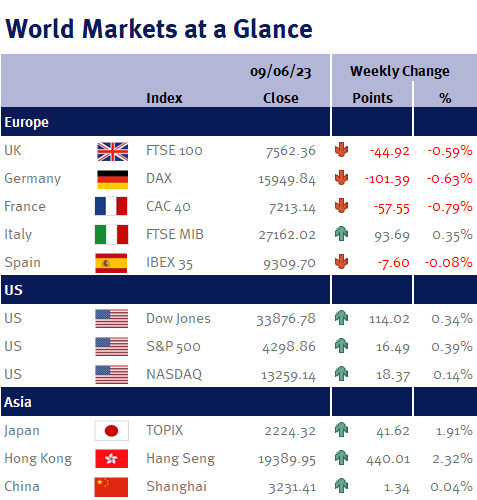Markets were surprised by the Reserve Bank of Australia (RBA) and the Bank of Canada (BoC) this week, as both increased interest rates. Policymakers from both banks believe that the previous monetary policy measures were not sufficiently restrictive to rebalance supply and demand and achieve sustainable inflation at the 2% target. The unexpected hikes sparked some speculation that policymakers may need to maintain higher rates for an extended duration.
The U.S. Federal Reserve prepares to conclude its upcoming meeting on Wednesday 14 June: it is widely anticipated that the Fed will maintain its key benchmark interest rate of 5.00% to 5.25%. This could potentially break a streak of 10 consecutive meetings during which the rates were raised and would provide a welcome boost to equity and bond markets. In the event that rates remain unchanged in June, investors will be closely monitoring any signals regarding the possibility of the Fed resuming rate hikes at its subsequent meeting ending on 26 July 2023.


